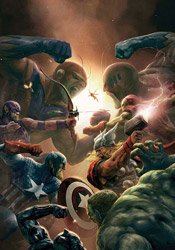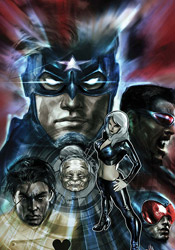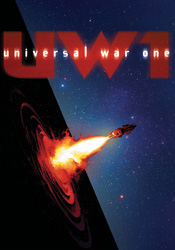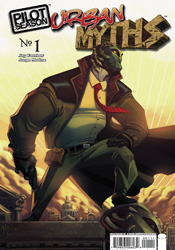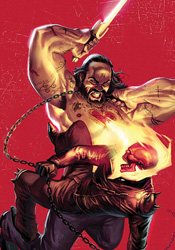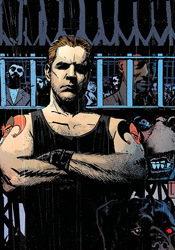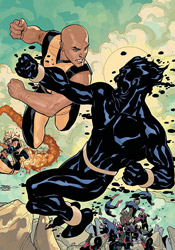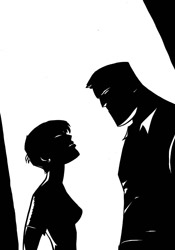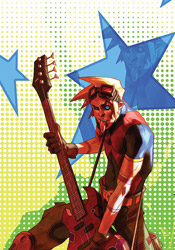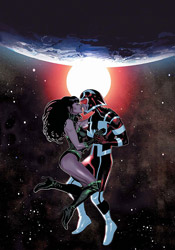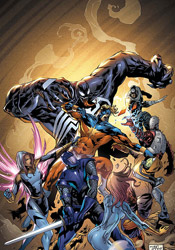
The team's first action since their little disagreement provides a good starting point for new readers. With Songbird settling into her new post as team leader, she takes the opportunity to loudly proclaim each team member's motivations and specific powers in the midst of the fray. It's not exactly the subtlest way to get new readers up to speed, but it gets the job done without holding the story back and gives each member a moment in the sun. The Thunderbolts' quarry this month, a giant, sentient mass of killer bees named Swarm, provides little more than window dressing as the team takes turns throwing weapons at him in a virtual merry-go-round of ineffective superpowers. It's only once the story has defined its players and their powers that the threat is squashed, almost effortlessly, and forgotten. Although the focus is clearly on familiarizing new readers with the cast, even from that perspective it's difficult to ignore the cliché.
Although he's relinquished a bit of authority after last month's romp, Norman Osborn is still the heart and soul of this team, and the only character with an even remotely interesting personality. Without his cutthroat decision-making and volatile, harshly honest personality, the series would be lukewarm at best. Writer Christos N. Gage seems to acknowledge this, as he gives Osborn the focus on almost every single page this month. While that approach is working on the short-term, at some point its time is going to run short. The real money in this story is in the team finally rebelling against the controlling former Green Goblin, and unless the rest of the team develops strong personalities of their own by that point, the book will flounder almost immediately. Osborn really is the only thing keeping this legible.
Fernando Blanco's artwork begins strong, but slowly deteriorates as the issue carries on. He shows a distinctive style, effectively spotlighting the contrast between the calm, businesslike demeanor of Norman Osborn and the more flamboyant, outlandish personalities of his underlings in the heat of the moment. However, Blanco has a recurring problem with depth and perspective, which is especially pronounced when he's tasked with rendering the lumpy, disproportionate Venom. His compositions are generally solid and he brings a certain degree of enthusiasm to the fight scene at the story's outset, though his work isn't especially exciting. Slower, story-driven moments give him trouble, but those are infrequent this month and as such aren't a very big deal.
The cliffhanger at the end of this month's issue is probably its sole redeeming moment. As such, I'm hopeful that the series will take a step back up next month, because this issue was one big, long letdown. It's not something I'd go out of my way for, but it's not offensive, either... worth flipping through at best.
Overall Score: 3
